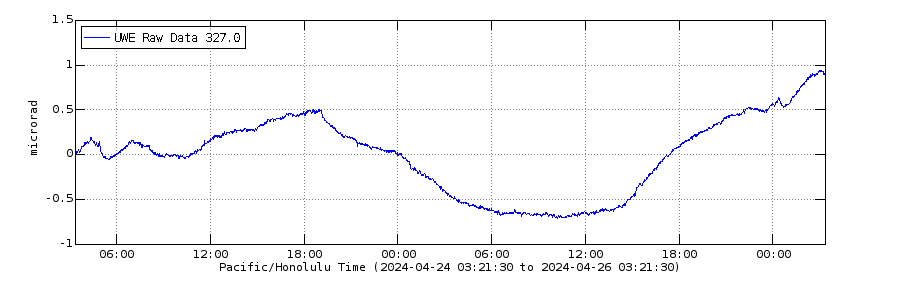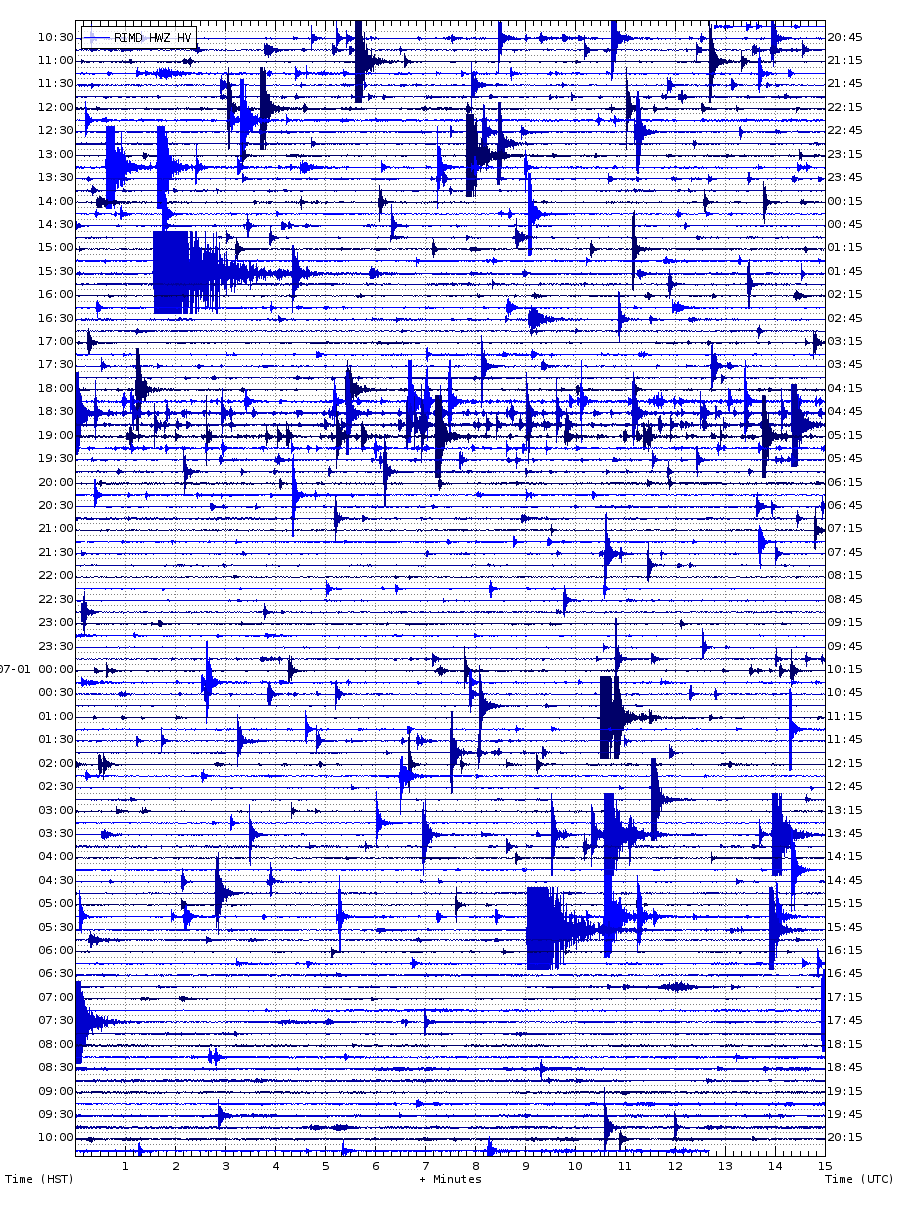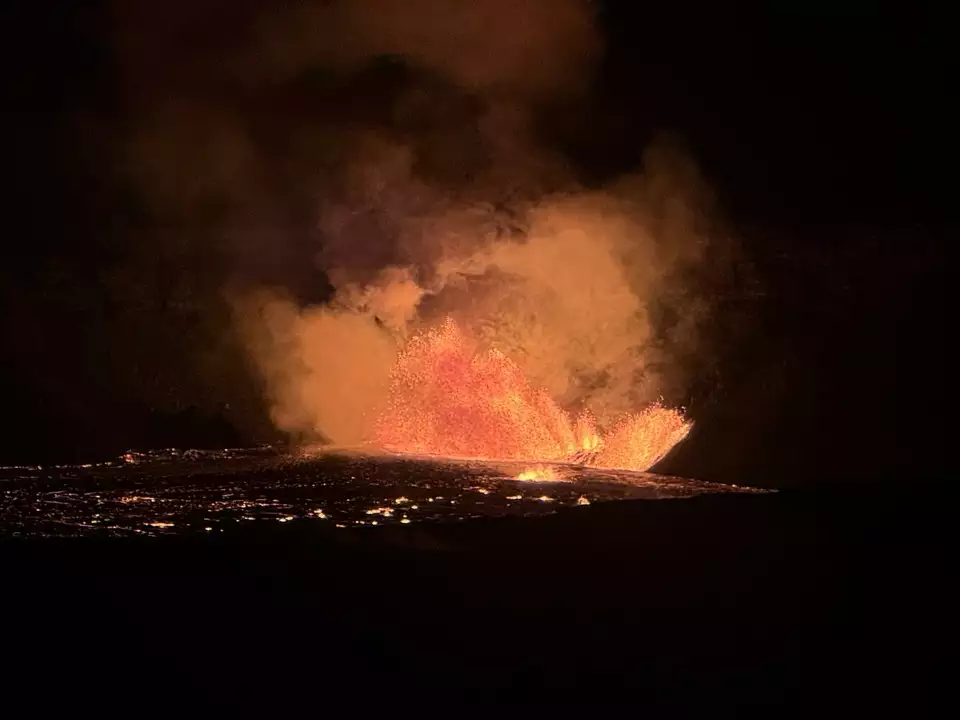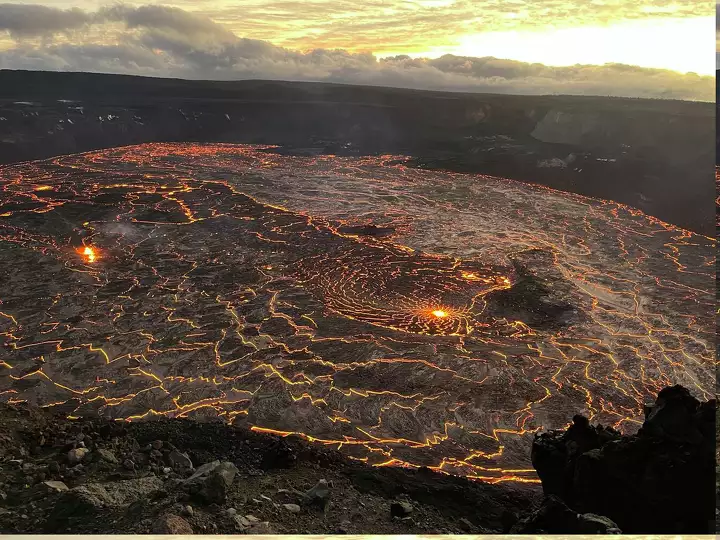[ Earthwatchers ] [ Main Menu ]
98731
From: ao, [DNS_Address]
Subject: A new Kilauea eruption.. 12/23/2024
URL: HVO Multi Media Page
|
From the link above.. A new Kilauea eruption began within Kaluapele (the summit caldera) at 2:20 a.m HST on December 23, 2024. Activity is confined to the caldera, with lava flows covering an estimated 400 acres. Increased volcanic gas emissions are the primary hazard of concern, with trade winds carrying the emissions to the southwest into the closed area of Hawaii Volcanoes National Park. My regular data set.. Here's a wide view of the summit..  Which is lovely at the moment with dawn in Hawaii and clear weather.. And the tilt signal..  And the seismic trace for the last 24hrs..  |
98735

From: ryan, [DNS_Address]
Subject: Re: A new Kilauea eruption.. 12/23/2024
URL: https://www.sfgate.com/hawaii/article/kilauea-volcano-hawaii-erupts-19998437.php
|
Hawaii volcano erupts, spewing 300-foot-high lava fountains By Christine Hitt, Hawaii Contributing EditorDec 23, 2024 Kilauea volcano erupted overnight, shooting lava fountains up to 300 feet in the air. Kilauea volcano erupted overnight, shooting lava fountains up to 300 feet in the air. USGS photo by P. Dotray After more than a year, Kilauea volcano is once again erupting inside Halemaumau Crater at Hawaii Volcanoes National Park. 0:04 / 0:18 Keep Watching Watch More exp-customer-logo The eruption began overnight after increased earthquake activity. Lava is flowing out of the southwest part of the caldera, lava bombs are flying out of the vents, and plumes of volcanic gas are reaching upwards of 8,000 feet. Lava fountains are also shooting into the air, which, as of Monday morning, are averaging about 70 meters, or 230 feet. “The highest that they observed early in the morning was closer to 90 meters [295 feet], generating lava flows that are covering part of the caldera floor,” Katie Mulliken, a geologist at the U.S. Geological Survey’s Hawaiian Volcano Observatory, told SFGATE.  The Kilauea eruption began at the summit around 2 a.m. Hawaii standard time on Dec. 23, 2024. It is creating lava flows at Halemaumau Crater. USGS The lava flow is covering an area of about 400 acres — a small fraction of the actual size of the caldera, which covers 4 square miles. Mulliken said that geologists will be flying over the volcano later Monday to get more accurate estimates on the volume of lava that has erupted and the amount that’s covering the crater floor. The USGS Hawaiian Volcano Observatory reported that there are “no immediate threats to infrastructure” and has lowered its volcano alert level from warning to watch. Though the last eruption at Halemaumau Crater was in September 2023, Mulliken said Kilauea has erupted since then in two other areas of the volcano outside the caldera, in the southwest and east rift zones. Unlike the other eruptions this year, visitors can see this crater eruption from overlooks at various points in Hawaii Volcanoes National Park, which is open 24 hours a day. “[There are] no eruption-related closures at this time, and the winds are currently blowing the volcanic gas away from the open viewing areas,” Jessica Ferracane, a spokesperson for Hawaii Volcanoes National Park, told SFGATE.  The new Kilauea eruption is creating plumes of hazardous gas, reaching elevations of up to 8,000 feet. USGS photo by D. Downs The park is anticipating more traffic from area closures and detours, along with fewer places to park as it undergoes a two-year construction project at various sites. Ferracane said that people should try to avoid crowds by visiting after 9 p.m. or before 5 a.m., and to bring a headlamp. It’s not possible to predict how long this eruption will last, and it could stop at any time. “The past Kilauea summit eruptions have lasted from about a week to more than a year long,” Mulliken said. The USGS will continue to monitor the eruption, providing updates daily. |
98736

From: ryan, [DNS_Address]
Subject: Re: A new Kilauea eruption.. 12/23/2024(NT)
URL: https://www.sfgate.com/news/article/stunning-photos-show-lava-erupting-from-hawaii-s-20000153.php
| (NT) |
98737
From: ao, [DNS_Address]
Subject: Kilauea eruption.. Live Stream..
|
Here's HVO's live stream.. The eruption took a break... look back at the seismic plot on the OP.. but started up a few hourse ago and is now gaining in amplitude.. |
Responses:
[98739]
98739
From: Redhart, [DNS_Address]
Subject: Re: Kilauea eruption.. Live Stream..
|
both awe inspiring and scary. |
Responses:
None
98732
From: Redhart, [DNS_Address]
Subject: Re: A new Kilauea eruption.. 12/23/2024
|
was just watching videos of it. Very kewl..not much warning seismically this time. |
Responses:
None
[ Earthwatchers ] [ Main Menu ]